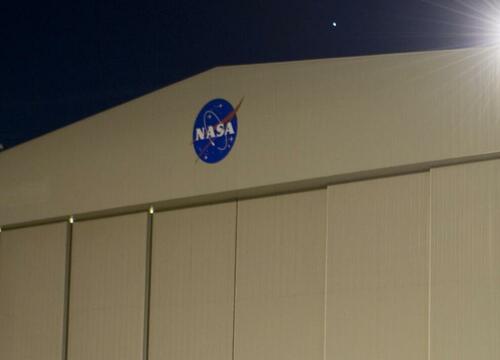NASA Finally Comes To Grips With Telework Tumbleweeds
Authored by Pete McGinnis via RealClearPolicy,
Two years on from COVID, the agency noticed sparse HQ attendance.
Someday, it may end up being one of those hoary old philosophical saws: “If the lease on a government agency’s headquarters expires, but nobody actually works there, do the taxpayers’ sighs of relief make a sound?”
The National Aeronautics and Space Administration (NASA) may have the honor of being the first federal agency to find out. Heavily redacted communications obtained by the Functional Government Initiative (FGI) show that the lease on NASA’s headquarters expires in 2028. An email from an official at the General Services Administration, which manages offices and properties for the federal government, said, “The agency is starting the process of evaluating options including leasing, buying a different building, or construction of a new headquarters building, all within the Washington area and close to public transportation.” There was one big problem: knowing how many workers a new HQ will have to house, because nobody at the agency seems to know how many workers show up at the office now.
NASA email chains reflect the confusion. One staffer involved in the discussion asked, “Are enterprise organizations on remote work agreements counted in their analysis of under 50% work being performed on-site?” Another had to explain that “100% telework … that is not a thing!” Apparently “Telework Coordinators” are doing a review of each pay period to determine who coded to 100% telework, the reason why, and conducting education and counseling when needed. The last alternative is the employee is not reporting onsite on a regular basis without approval and in contradiction to the regulation.
(Ironically, we know of two NASA employees who would dearly love to work from home but can’t. Rest assured, NASA’s doing everything that can be done while in PJs and bunny slippers to get its astronauts home. In the meantime, it’s good to know the SpaceX offices are rocking.)
Of course, it’s not only NASA. In spring 2023, the House Subcommittee on Government Operations and the Federal Workforce asked 25 agencies to report on the status of their telework arrangements. On November 29, 2023, Subcommittee Chairman Pete Sessions told a hearing, “I want to be clear, of the 25 agencies we wrote last spring, many responses were not, in fact, responsive. Eleven of the 25 did not include any figures at all regarding how many of their employees were currently teleworking—either in the Washington, D.C. area or agency-wide.” On the other side of the Capitol, Senator Joni Ernst (Iowa) has been aggressive in her push for transparency in telework and waste from mostly empty federal buildings.
Federal workers don’t much seem to miss the watercooler banter of yesteryear. They haven’t exactly been sprinting back to their offices in the two-plus years since the COVID-19 pandemic ended, and getting them back in hasn’t been a priority for the Biden-Harris administration. Despite demands from Congress and an order from President Biden, the trickle of returning workers hasn’t become a flood.
At NASA, with its “analysis of under 50% work being performed on-site,” it apparently took until February of 2024 to finally notice the tumbleweeds rolling through HQ and announce to staff it would significantly condense its space: “With daily occupancy in the building so low, people are spread out, which is a waste of space, can be tough on employees and is not the best use of taxpayer dollars.”
It’s nice that somebody’s thinking of the taxpayers. But while HQ was being rehabbed, NASA was going to 100% telework until “perhaps May.” And if the agency does move to a new building, the goal seems to be to have people in the office 90% of the time. So that “close to public transportation” feature will be handy. Some day.
To recap: the agency is considering a shiny new HQ building but can’t confidently say how many workers it will need to house, and managers don’t seem to know where everyone is. And their only answer is more telework. Meanwhile, the agency is conspicuously failing in the “Aeronautics and Space” mission it was created for and being bailed out by private enterprise. This is classic government dysfunction.
But it’s worse. It’s more proof – as though more were needed – that in the federal bureaucracy there’s little accountability and even less concern about what the people who pay the bills think about it.
Pete McGinnis is director of communications at the Functional Government Initiative.
Tyler Durden
Wed, 10/23/2024 – 17:40




Share This Article
Choose Your Platform: Facebook Twitter Linkedin